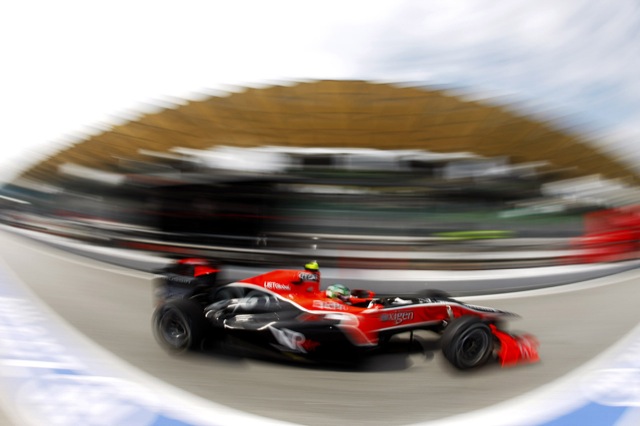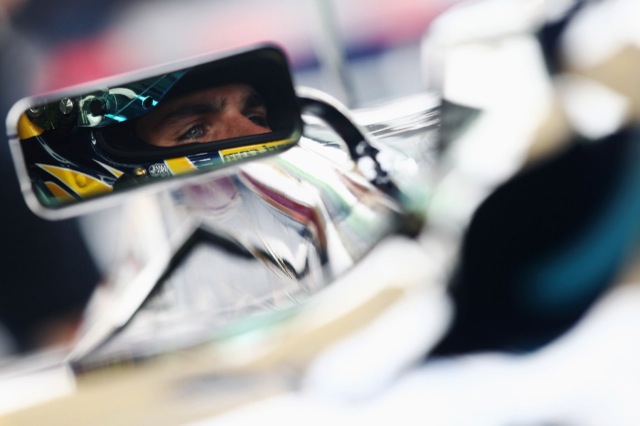The hot topic at the moment appears to be the diet Robert Kubica is currently on. According to his BMW team, Kubica has shed six kilograms over the winter period, a time at which many non-sports-people put on a few extra pounds. This weight-saving has apparently enabled the Pole to go a little quicker, the lighter his body meaning the team can add more ballast to bring the car up to the minimum weight of 605kg. Ballast is preferable over driver weight because it can be positioned in the car more appropriately, improving the overall balance and making the drivers job that little bit easier.
Kubica’s diet isn’t entirely common down the pitlane, and most drivers have a varied diet designed to help in a lot of key areas. While extensive cardiovascular workouts help the drivers develop key muscle groups, their diets have to complement this. It is often said that drivers burn through enough calories that they could just about eat whatever they want and it wouldn’t matter. However, health is important and drivers need to withstand up to two hours of intense pressure for their jobs, so pizza and ice cream feature less on their can eat list. Stamina is almost as important as a strong neck and back.
Each driver has a diet tailored to himself; no two drivers are quite the same and food allergies have to be considered, as well as general likes and dislikes. According to Renault’s Gabriele Polcari, it is important to allow drivers some flexibility in their diets. Forcing people to eat things they simply don’t like doesn’t make for a happy driver. And unhappy drivers tend not to drive well.
Formula One racers need protein, so white meat and eggs are important. Carbohydrates feature predominantly when drivers are training, so pasta and bread are included. Cereals, fruits, vegetables provide essential vitamins and fibres for the drivers, although everything that is on a drivers menu is carefully controlled to avoid over-indulging on one type of food. And despite the photograph of Jarno Trulli enjoying a glass of his own red wine, alcohol is not encouraged, but the occasional glass does little harm to the drivers.
Like many sports-people, Formula One drivers also have to adjust their eating habits. As a regular guy, I would normally have a light breakfast, lunch and dinner, with maybe a snack squeezed in somewhere if I’m feeling peckish. Drivers though tend to eat smaller meals, but more often. This helps digestion and enables the body to better gain all the nutrients from the food.
On a typical day during the season, drivers will arise early and eat cereal for breakfast. They then break at about 10am for a mid-morning snack of fruit and protein. Lunch usually consists of pasta and a little sauce for taste. They then break again mid-afternoon at about 3pm for fruit and dinner in the evening. Opposed to myself, a Formula One drivers’ dinner is actually the lightest meal of the day, typically white meat or fish with vegetables.
Kubica has apparently cut out pasta from his diet but increased his fish intake. While the Polish driver never looked overweight in the slightest, the reason behind his change in diet is to simply make him a little lighter. Unfortunately, while the diet has certainly reduced his weight, it has also reduced his muscle-mass, which will hurt him in the latter parts of the races. If Kubica continues with his new regime, it will be interesting to see how he fares at Interlagos, a circuit notoriously difficult on drivers bodies thanks to its anti-clockwise and undulating nature.


















well, I have been present at few parties where F1 drivers were around (after races), and while I am not going to talk details I can tell you, when some of them drink, they do not drink just an occasional glass of wine :-). there are several party animals among current crop 🙂 how that goes with their nutritional regimes I am not sure
what was the other post about, no alcohol and F1 ? 🙂
I figured Kubica had to give up the kielbasa, but the pierogies now, too?
[…] What Does A Formula One Driver Eat?: A look at Robert Kubica’s weight loss and what the drivers eat to help them achieve their goals of driving fast and maintaining strength. […]